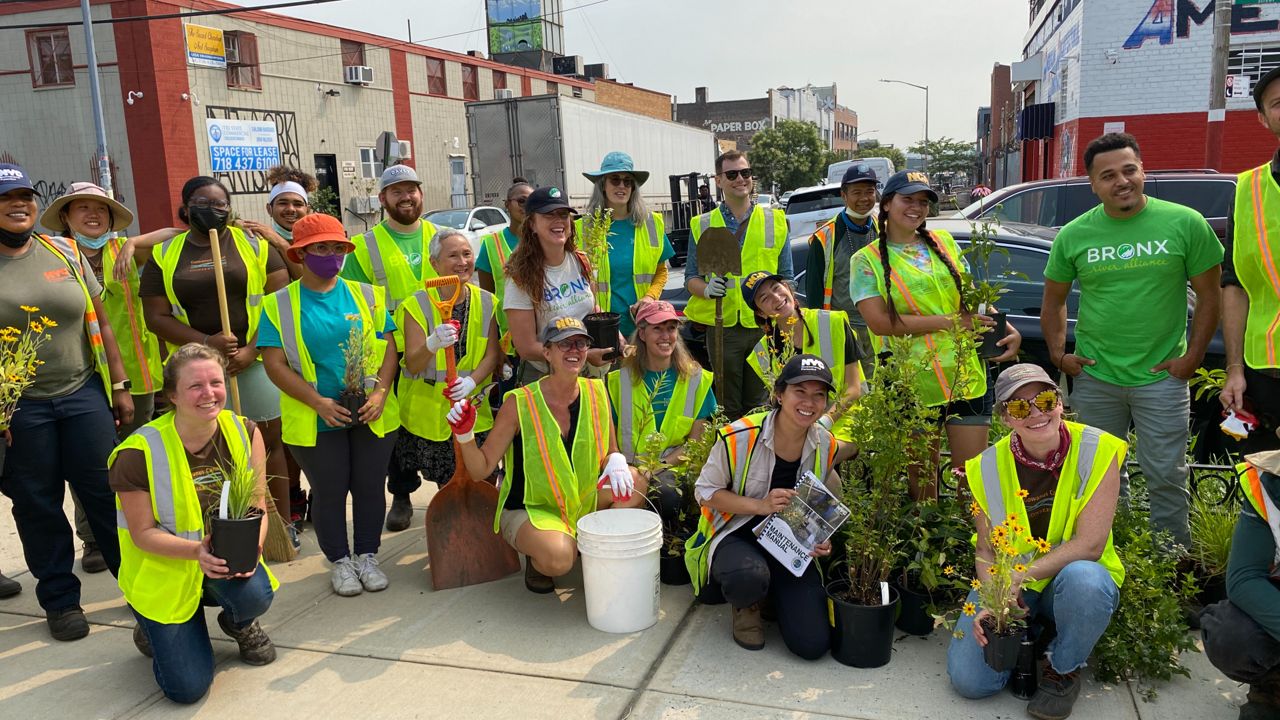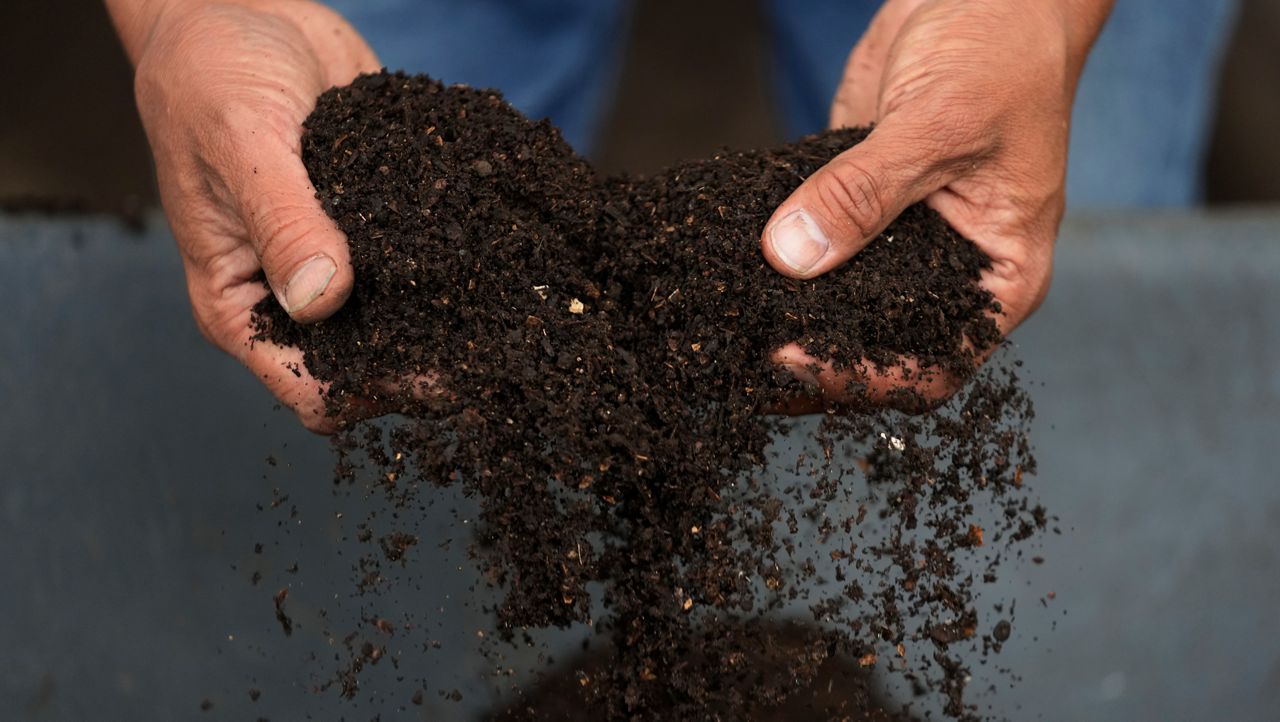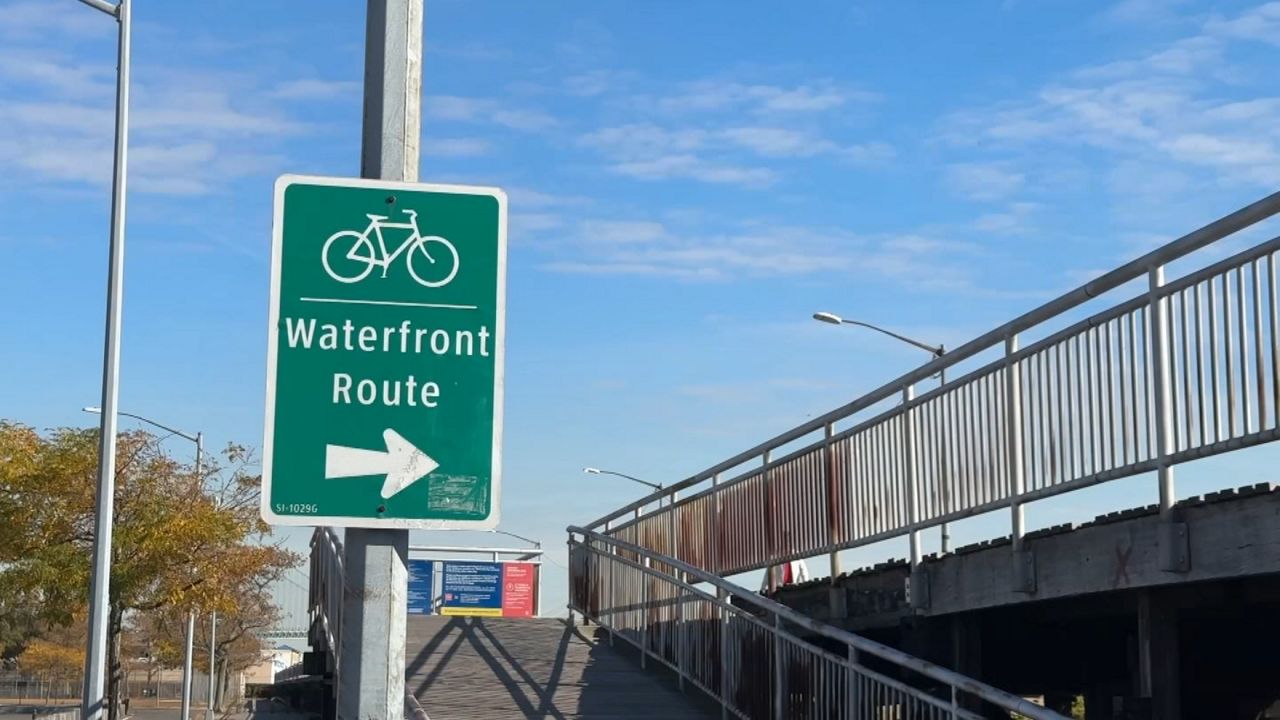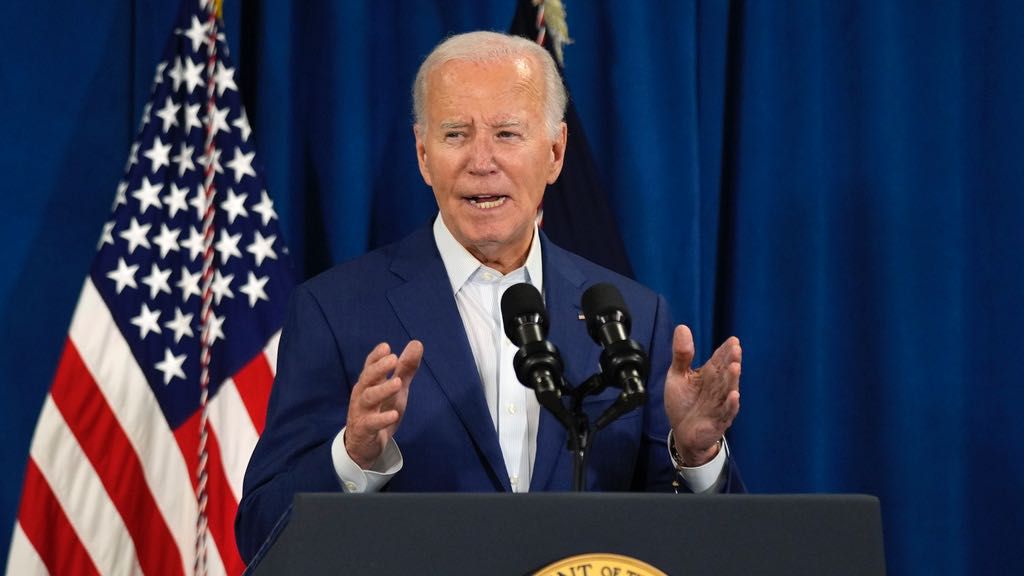A rain garden on Waterbury Street in East Williamsburg is getting a sprucing up. It’s not only to make it look better, but so it will work more efficiently soaking up rain. That keeps the storm water out of the city's sewer system, helping avoid overflows that pollute waterways like the already severely polluted Newtown Creek just a few blocks away.
"We have over a billion gallons of combined sewage that goes into the waterway every single year,” said Willis Elkins, the executive director of the Newtown Creek Alliance.
The city's Department of Environmental Protection, DEP, has more than 11,000 curbside rain gardens constructed or under construction. Not only do they reduce sewage in local waterways, but also absorb floodwater, cool neighborhoods during hot summers, improve air quality and provide a habitat for wildlife. That's why they are the focus of an effort by four organizations that have come together to help the city's Department of Environmental Protection maintain them. That includes removing trash that accumulates and getting rid of weeds.
"These are plants that have come in from the air and sort of crowding out the plants that we do want to thrive and creating a bit of an eyesore, so we are pulling those out and lovely new plants are going to be planted in their place,” said Andrea Park, the executive director of the Gowanus Canal Conservancy.
The park’s organization plus the Bronx River Alliance, Newtown Creek Alliance and the Hope Program have collectively received a grant from the New York City Green Relief and Recovery Fund. The City Parks Foundation administers it, and it will help provide job training opportunities for New Yorkers as part of the partnership.
"Green infrastructure is a form of job creation because, as you can see from all the work that we have done here today, installing the green infrastructure is work, but then for the green infrastructure to work well needs to be maintained”, said Joanna Larson, the director of transitional employment and general manager of the Intervine program at the Hope Program.
Larson said all of this can produce good quality year-round jobs. It's all part of the effort to build better water quality and address the impacts of climate change.
“This collaboration is really a way for us to come together across the city and really work to make sure that green infrastructure, rain gardens across the city, is really a success,” said Maggie Greenfield, the executive director of the Bronx River Alliance and Bronx River Administrator for NYC Parks.
All the groups involved hope more funding will come their way for the program, because as more rain gardens are built around town, there will be more people needed to make sure they are taken care of.








